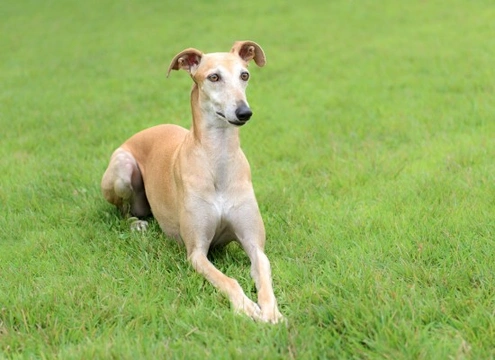
Canine Parainfluenza - Parainfluenza in Dogs
Canine parainfluenza is a relatively recent addition to the range of communicable diseases that can affect dogs, as originally, the parainfluenza virus strain only affected horses before it mutated and jumped the species boundary. At present, it is only communicable between dogs, and cannot be caught by other animals such as people or cats.
It is also sometimes referred to as race flu or Greyhound disease, as it spreads quickly between dogs kept in close quarters with each other, such as between racing dogs in kennels or at Greyhound racing tracks. However, it is not unique to any breed or type of dog, and any dog can potentially contract the condition.
Canine parainfluenza is also one of the component factors that make up another highly infections condition, that being kennel cough. Kennel cough occurs when canine parainfluenza, which is a viral condition, combines with a bacterial infection called Bordatella bronchoseptica, which is again, highly contagious.
All dog owners should be aware of the potential for their dogs to contract canine parainfluenza, and the situations that can allow the virus to spread between dogs. Read on to learn more about canine parainfluenza, and what it means for affected dogs.
What causes canine parainfluenza infection?
Canine parainfluenza is a viral condition that is transmitted through a variety of means, including contact with affected dogs and the bowls, bedding and kennels that they use, and by means of the airborne particles from coughing and sneezing.
After infection and potential recovery, dogs can continue to pass on the virus responsible for the condition for up to two weeks.
What type of situation may place dogs at risk of developing the virus?
Any situation that places dogs in close quarters with other dogs can cause the condition to spread, so contact with other dogs in dog parks and out walking may potentially place your dog at risk.
However, the disease is most prevalent and most widely spread between dogs living together in close quarters; environments such as boarding kennels, race kennels, rehoming shelters and pet daycare centres. Other situations such as shows and competitions, and even visits to a canine grooming parlour can also place healthy dogs at risk for developing the condition if the virus is present.
The symptoms of canine parainfluenza
Dogs may exhibit a range of symptoms when affected by the virus, so dog owners should be on the lookout for any combination of the signs outlined below:
- A persistent dry, hacking cough that may become worse after exertion
- Fever and high temperature
- A runny nose or nasal discharge
- Sneezing
- Eye inflammation or weeping eyes, possibly accompanied by conjunctivitis
- Depression, lethargy and loss of appetite
Diagnosis
If you suspect that your dog may be suffering from canine parainfluenza, even if they only have a persistent dry, hacking cough, it is important to get them checked out by your vet as soon as possible. Blood tests may be required to detect the presence of the virus, and a chest x-ray may be taken to identify if pneumonia is present.
Fast diagnosis is important not only to ensure prompt treatment, but to keep the condition from spreading to other dogs by means of quarantine procedures.
Treating canine parainfluenza
It is important both to treat the virus and the cause of the infection in dogs affected, but also to prevent the condition spreading to other dogs. While dogs may recover from the virus on their own given time, this is not the case for all dogs, and the virus will still remain as a risk that is easily spread to other dogs while one dog is carrying it or affected by it.
Generally, antibiotics will be administered to deal with any accompanying bacterial infection, and antiviral therapy may be used to suppress the virus itself and allow the body to heal. IV fluid therapy may be used if the dog has become dehydrated as a result of the condition, and if the cough is very dry and painful for the affected dog, cough suppressants and painkillers may be administered as well.
The prognosis for affected dogs
The recovery time and eventual result of treatment will largely depend on the health of the dog in question before they contracted the virus, and how severe their infection is. Prompt treatment and support while the body heals is vital, as is ensuring that secondary infections and complications do not arise from the condition. Canine parainfluenza can affect the lungs and respiration as well, and persistent coughing over a long period of time can lead to scarring of the lung tissue and other long-term problems.
A vaccine for canine parainfluenza is available, but canine parainfluenza is not one of the core conditions that are always vaccinated against as standard, so you may have to request the vaccine for your own dog if you wish to have it administered.



